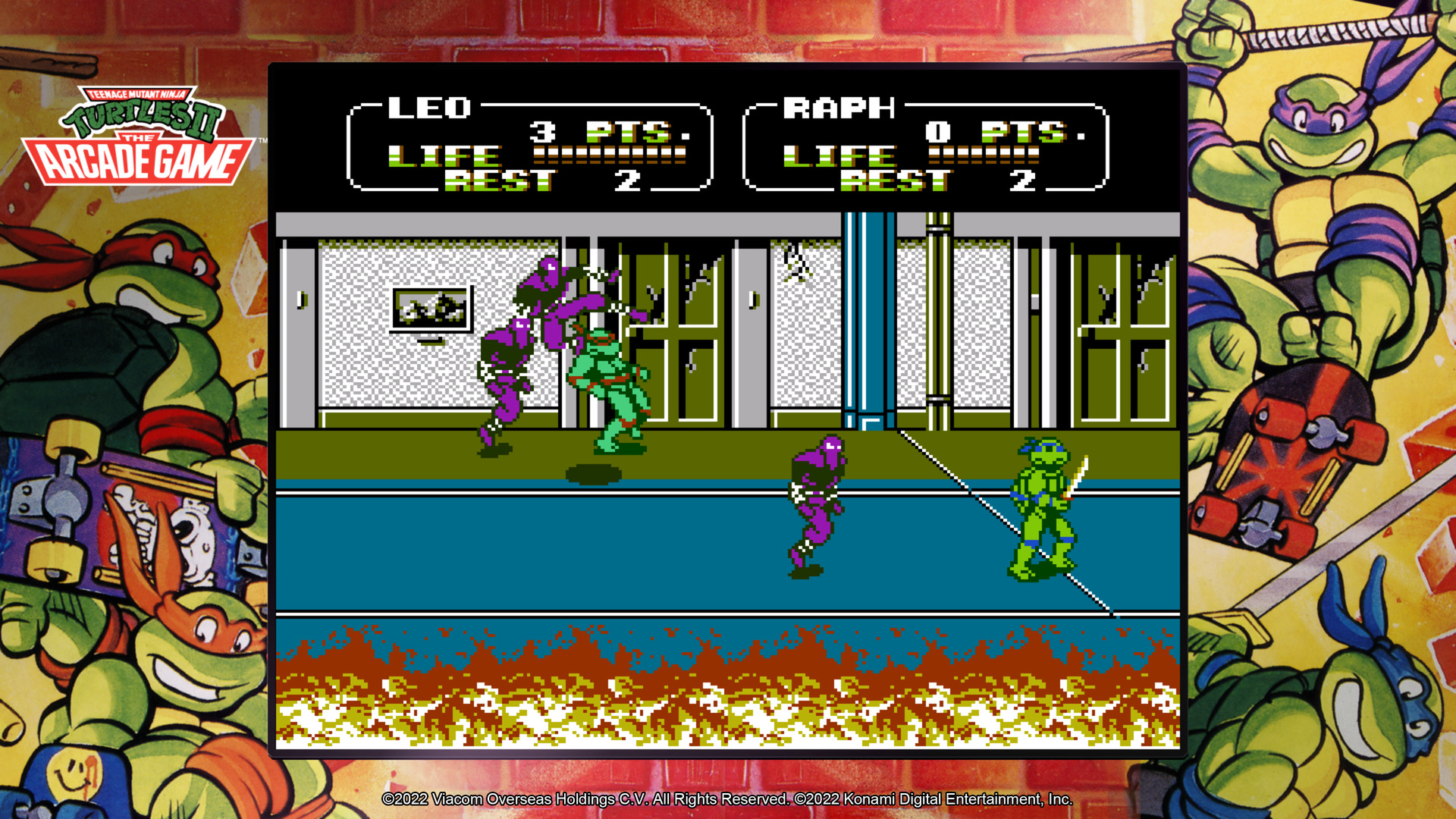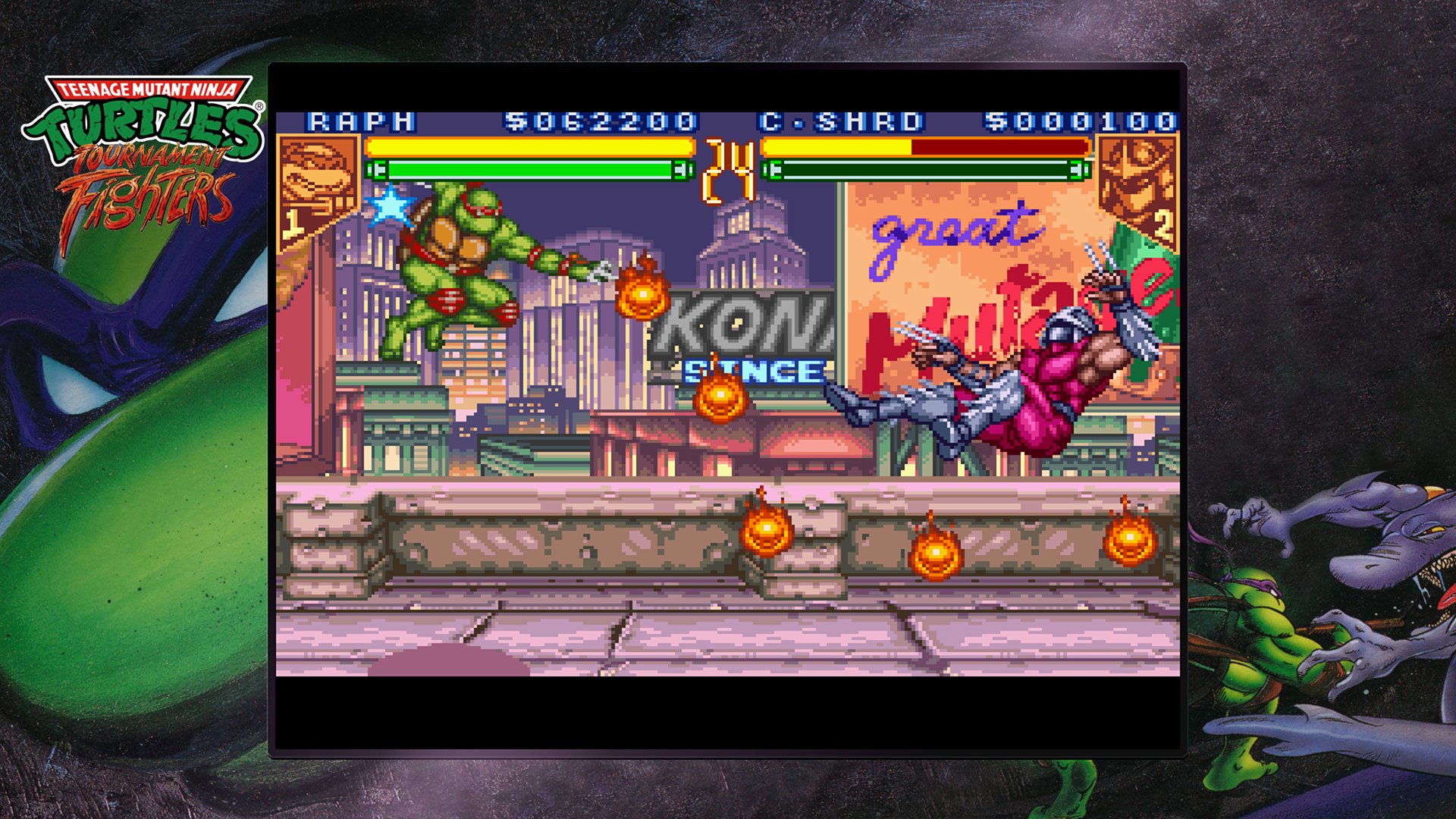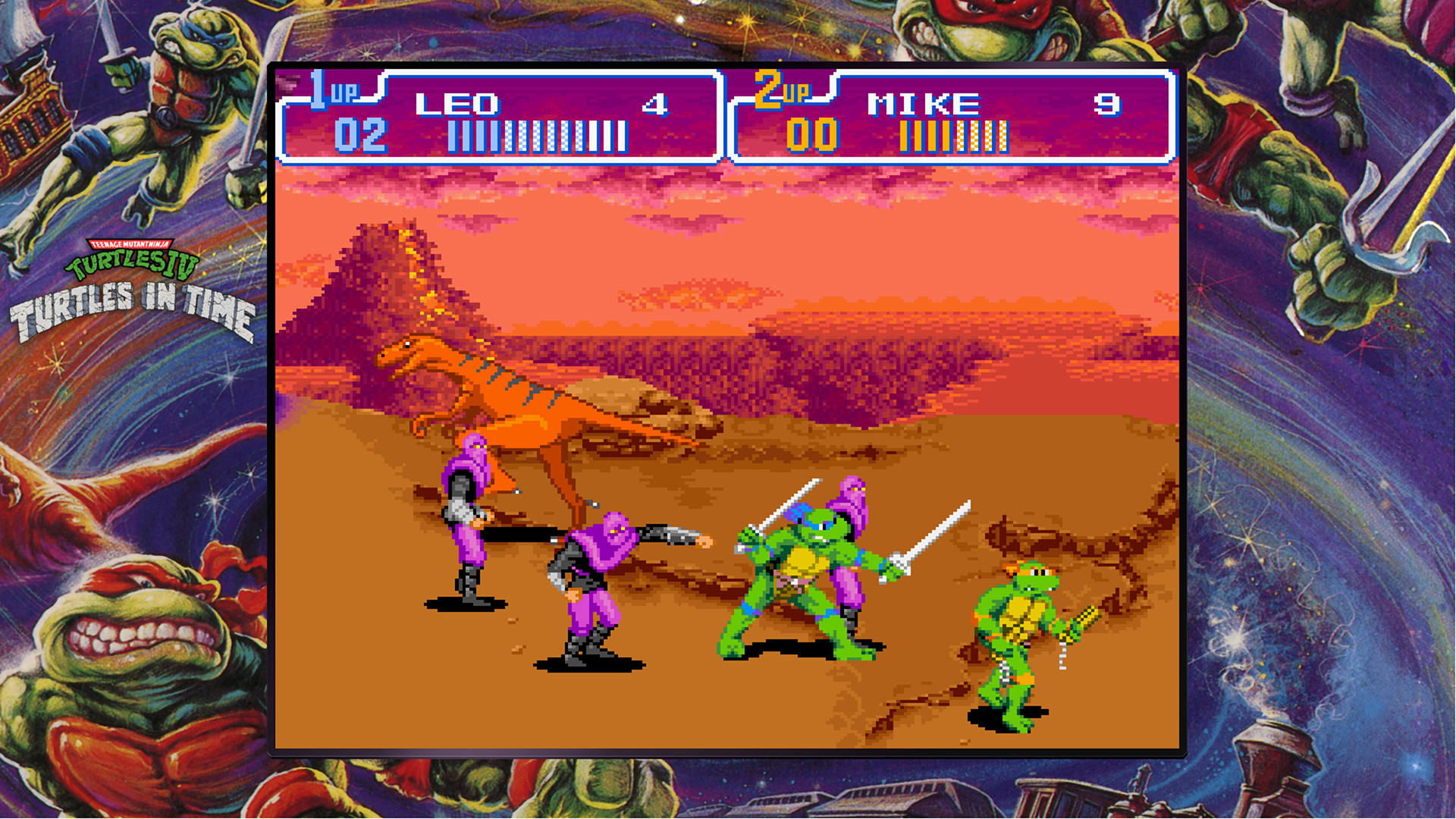
Created by Kevin Eastman and Peter Laird all the way back in 1984, Leonardo, Raphael, Donatello, and Michelangelo, who make up the legendary Teenage Mutant Ninja Turtles, have been one of the biggest pop culture icons for the past 38 years. The Heroes in a Half Shell have been featured in almost every form of media from comics, movies, various animated and live-action series, action figures, and of course video games, both at arcades and on home consoles.
The majority of the games were developed and published by Konami, who have dug through their archives and brought back 13 of their classic games between 1989 and 1993 in ‘Teenage Mutant Ninja Turtles: The Cowabunga Collection’ to PlayStation 4|5, Xbox One, Xbox Series X|S, Switch and PC. This massive compilation pack contains perfect ports of games from the arcades as well as home consoles such as NES, SNES, Game Boy, and Sega Mega Drive.
Starting with 1989’s ‘Teenage Mutant Ninja Turtles’ on NES, this was the first ever TMNT game that had fans excited to play as their favourite turtles. This is also the infamous game that was unfairly and brutally hard to play, especially that dreaded underwater level. Players could change between the four turtles anytime, but the best advantage was always Donatello, who had the longest reach with his bo staff, which of course made Raphael quite useless with his little sais. As difficult as this game was, it was only the beginning and paved the way for bigger things ahead.
Later that same year, ‘Teenage Mutant Ninja Turtles’ hit arcades, becoming an instant classic of the beat ‘em up genre and even allowing up to 4 players. Seeing all 4 turtles on screen being controlled by 4 friends created some really fun times and some of the best memories. The NES port of this game, released in 1990, was of course a very downgraded version of its arcade counterpart and only allowed up to 2 players, but it was a nice way to bring the shell shocking action home and was much a better TMNT game than what came before it.

In 1991, ‘Teenage Mutant Ninja Turtles: Turtles in Time’ arrived in arcades and on SNES a year later. Sticking with the beat ‘em up formula, it improves the gameplay of an already excellent arcade game in an all-new adventure taking down Shredder, Krang, the Foot Clan, and several other villains along the way. The SNES version is an almost perfect port of the arcade classic, with the only downside being it can only have up to 2 players instead of 4. To this day, ‘Turtles in Time’ has remained one of the all-time classics in gaming history.
Even with the SNES already out at this point, ‘Teenage Mutant Ninja Turtles III: The Manhattan Project’ was released on NES in 1991. The Ninja Turtles have always been at their best in beat ‘em up games and this NES-exclusive game keeps that momentum going. Even though the NES is outdated, it’s still a very enjoyable game best played with a friend.
The Game Boy even had its own TMNT series. The 3 games were subtitled ‘Fall of the Foot Clan’ (1990), ‘Back from the Sewers’ (1991), and ‘Radical Rescue’ (1993). All 3 are basic 1 player side-scrolling platform games but become more challenging later on. These games may not seem like much by today’s standards, but they were enjoyable games to play on the go.
In 1992, Sega finally got its own TMNT game, with ‘Teenage Mutant Ninja Turtles: The Hyperstone Heist’ exclusive to Mega Drive. Much like the 2 arcade classics, it’s another beat ’em-up entry and even more radical turtle mayhem for 1 or 2 player action. Gameplay-wise, there are a few things missing compared to ‘Turtles in Time,’ but was still a fantastic multiplayer game to play at home.
With the martial arts theme of the franchise, it was only fitting the Ninja Turtles would enter the fighting genre in 1993’s ‘Teenage Mutant Ninja Turtles: Tournament Fighters,’ long before their inclusion in 2017’s ‘Injustice 2.’ 3 versions of this game on NES, SNES and Mega Drive were released in the same year, but are very different. The best version is on SNES, as it’s the most complete fighting game that can be compared to the likes of Street Fighter II.

On Mega Drive, it feels like a pale imitation of the SNES version, with only 2 attack buttons plus 1 to taunt as opposed to the SNES’s 4 attack buttons. On this occasion, Sega didn’t do what Nintendon’t. On SNES, the battles take place in more urban environments, while the Mega Drive version has them battle on different planets. The NES version was of course a little too outdated by 1993 but would’ve been a great game if released a few years earlier. All 3 versions featured some original characters, with a few actually maintaining some relevance today without appearing in any other TMNT media, the main one being Aska from the SNES version.
Strategy guides for every game can be viewed anytime from the pause menu to provide some helpful tips and even full command lists for ‘Tournament Fighters’. They’re all designed to look like books with pages to flip through and can be zoomed in to get a better view. This feature does have a few flaws though. Each page will first appear blurry and can be slow to load, like the dial-up internet days. Also, the zoom-in feature doesn’t highlight some sections of certain pages, which can be frustrating when trying to read that section, and the only way to see it is to get really close to the TV screen. Hopefully, this will be patched up via DLC update.
At any time, players can rewind up to 10 seconds for players to save themselves from a Game Over, which is especially handy in the harder games. A Watch Mode is available for any game, which is a pre-recorded playthrough or even turning on the ability to take no damage at all, no matter the game. This is really helpful for players to learn strategies and improve their skills. Players can even jump into play at any moment during this and continue from there, but can’t go back to Watch Mode after taking control.

Almost every game can be played in either their American or Japanese versions, which changes the text language and some character designs. Different filters can be selected to give that old-school arcade/TV screen appearance adding to the nostalgia.
Online play has even been included for the original arcade game, ‘Turtles in Time’ (arcade), ‘The Hyperstone Heist,’ and the SNES version of ‘Tournament Fighters,’ which gets rollback netcode. In my personal experience, all 4 games play incredibly smooth, allowing these 4 classics to be enjoyed online for the first time for players to team up or face off.
The TMNT franchise is rich in history and The Cowabunga Collection has crammed in not just 13 classic games, but also tons of original concept sketches, promotional material, magazine ads, comic covers, game packaging, screenshots from different cartoon series and so much more, plus listening to all the soundtracks from every game, which can all be enjoyed in the Turtles Lair. The game covers can be viewed in their original forms, which means even seeing the Nintendo logos and the ‘Official Nintendo Seal of Quality’ badge on the back of the Nintendo packaging. This might actually be the first time seeing Nintendo logos on non-Nintendo consoles, but regardless, it will send players on a real nostalgia trip.
It’s amazing to see all these classic games ported to modern consoles. The Ninja Turtles, plus all their friends, and even the villains, have always had a special place in the hearts of fans around the world. These games played a huge part in not only the Turtles’ legacy but also video game history. Reliving these classics offline and online, and going through all their history in the Turtles Lair will create one shell of a trip down memory lane. Even if Konami has been a shell of its former self in recent years, ‘Teenage Mutant Ninja Turtles: The Cowabunga Collection’ is one of the best things they’ve ever done and gives the people what they want. COWABUNGA DUDE!

The Good
- 13 classic TMNT games between 1989 and 1993 all packed in
- Perfect ports of every game
- Being able to play some long forgotten games
- 4 of the games feature smooth online play
- Can play American or Japanese versions
- Old school arcade/TV screen filters
- Rewind feature
- Watch Mode where players take over anytime
- The Turtles Lair containing the rich history of the Ninja Turtles
- Strategy guides for every game
- That good nostalgia feeling
- Konami actually getting something right
The Bad
- Strategy guides sometimes load very slow
- Some sections of the strategy guides can’t be zoomed in








